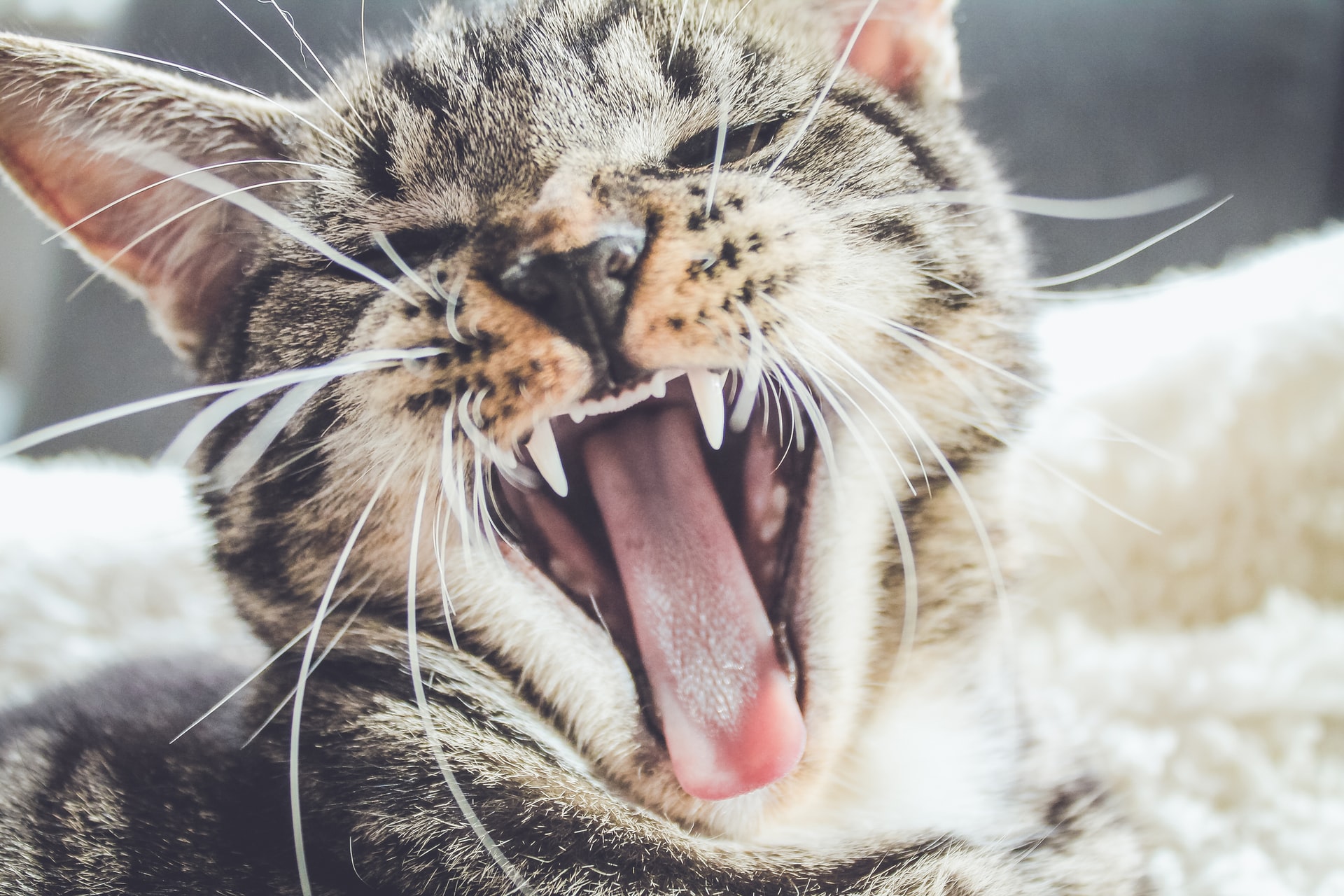
05 Aug What is Stomatitis in Cats?
Stomatitis in cats is often a very painful dental disease. Let’s dissect the term stomatitis. “Stoma” refers to mouth. The suffix “itis” refers to inflammation, therefore stomatitis is inflammation of the mouth. When present, it often appears as red lesions in the mouth.
The exact cause of stomatitis is unknown. It is theorized to be an autoimmune disease whereby kitties become “allergic” to plaque. Plaque is a natural film of bacteria that coats the teeth and needs to be removed regularly to prevent oral disease.
Symptoms of Stomatitis in Cats
As a cat owner, you may have the opportunity to observe some of the following signs. Others will only be detectable by an experienced veterinary dentist. The symptoms of Stomatitis in cats may include:
- Difficulty eating
- Very bad breath
- Oral hemorrhage
- Excessive salivation
- Enlarged lymph nodes
- Oral pain
- Evidence of dehydration
- Decreased appetite
- Weight loss
- Poor body condition
The typical history is a cat with a good appetite that goes to the food bowl to eat, takes a bite, salivates (possibly bloody), shakes its head, and runs away—it is excruciatingly painful for felines to eat with this oral condition. Most kitties with fractured jaws or head trauma will even eat. Cats with severe stomatitis may not eat, suggesting that stomatitis is more painful than a fractured jaw. Kitties may have an unkept appearance to their coat as well because it is too painful for them to groom themselves.
How to Tell the Difference between Gum Disease and Stomatitis
The images in Figure 1. below illustrate gingivitis (inflammation of the gums) only and not stomatitis. This will likely resolve with a complete oral health assessment and treatment (COHAT). Do you think that this kitty needs to brush better?
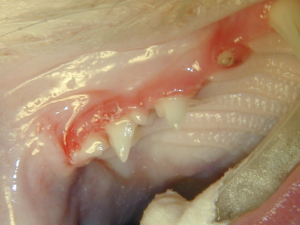
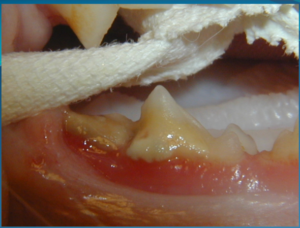
Figure 1. Gingivitis only
The second two sets of images are cats with moderate to severe stomatitis. These cats would very likely freak out if their teeth were attempted to be brushed.
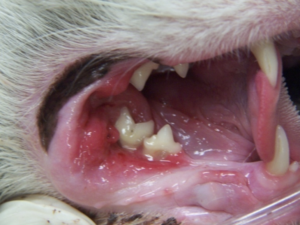
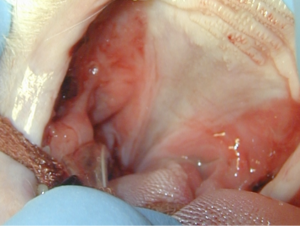
Figure 2. Stomatitis
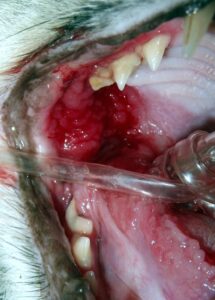
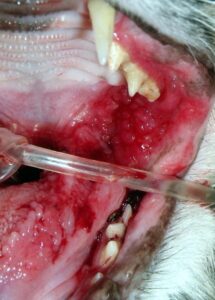
Figure 3. Stomatitis
How is Stomatitis Treated?
There are two treatment modalities for stomatitis: surgical and medical. Unfortunately, the medical option is not very effective alone.
The hallmark of treating stomatitis is to remove the largest source of plaque—the teeth. The question is often asked, “how is my kitty going to eat?” Believe it or not, cats that have had their teeth removed due to stomatitis most often eat better. They can and often do have a normal, happy and pain-free life.
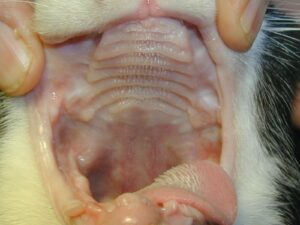
Figure 4 One month post extraction.
Considering that 92% of cats with stomatitis will have severe periodontal disease and half of them will have painful conditions such as tooth resorption and retained tooth roots, they must have a COHAT by a board-certified veterinary dentist and oral surgeon. The only way a kitty’s mouth can be properly examined is by placing them under general anesthesia.
Of 10 kitties that have full mouth extractions (FME), three or four (actually 35%) will be deemed cured upon recheck. The remainder of the kitties will require supplemental medications and rechecks for several months. Ultimately, all but two kitties will be cured. Approximately one kitty in ten will need medications for the remainder of its life to remain comfortable and one in ten kitties are refractory (not curable).
Veterinary Dentist in Arizona
According to the Cornell College of Veterinary Medicine, “Studies report that between 50 and 90% of cats older than four years of age suffer from some form of dental disease…” If you do not brush your cat’s teeth or they have never been in for a professional cleaning and oral exam, schedule one with our caring team at Carefree Dentistry and Oral Surgery for Animals. Dr. Kipp Wingo is a Board-Certified Veterinary Dentist who has treated hundreds of cats for dental disease. When your pets are here, they are family.
Photo by Erik-Jan Leusink on Unsplash

